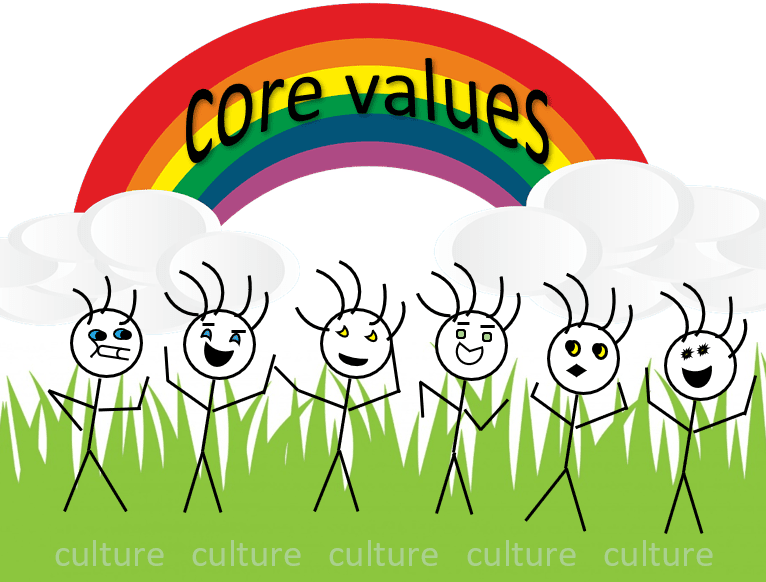Employee handbooks. Love ‘em or hate ‘me. Take ‘em or leave ‘em. Eventually, you probably need one. Or maybe you have one and you hate it.
Sigh…
But despair not. You can have a great handbook—but you want to be mindful of all-the-things a handbook should do.
That’s right, all-the-things.
Handbooks should serve as more than an awful-sauce of legislative alphabet soup written as if you and each of your colleagues are bad actors cleverly disguised as great coworkers secretly seeking out that first opportunity to break a rule.
Employee handbooks should do three business-critical things:
- Minimize risk through compliance.
- Communicate how things are done.
- Acculturate and disseminate values.
Now I’ll explain what I mean by each of these.
Minimize risk through compliance.
This is the purpose we traditionally link to the intrepid handbook. We (the business) have one to assert our compliance with the laws of the land in which we operate.
How do we pull this off? We reiterate, rehash, and reconstitute legalese. We often use lawyers to help us say just the right thing to help us in court if, God forbid, we end up there. The phraseology is hard to understand by those without legal training. The tone is one of preliminary guilt and blame.
This is because the purpose is to minimize risk and demonstrate compliance. The audience isn’t so much the employee, but lawyers and bureaucrats.

I make light of this, but minimizing risk is important. It’s useful. It behooves us to address legal compliance and let our teams know without equivocation that we follow laws and stand against doing bad and illegal stuff. Which brings us to our next purpose.
Communicate how things work.
Say what you will about the readability of the average handbook, employees rely on these documents to get answers. Answers to perfectly reasonable questions about their pay, time off, and other business practices for YOUR business.

Don’t believe me? I was at one place where there was no handbook because the CEO was (rightfully) anxious about having a bureaucratic tome of scary legalese. He would have been fine forgoing a handbook for a long time, but the people kept asking for a document to get their questions answered about pay, time off, and other business practices.
Watch out when you optimize your handbook to address compliance and risk-minimization. It’s super easy to sacrifice the readability and utility of the document to serve as a help and guide.
A handbook should really serve as a help and guide. Doing that means organizing the information with an eye on “user experience”. It also means being thoughtful about word choice and tone, which brings us to the final purpose of employee handbooks.
Acculturate and disseminate values.
Your business has a culture. Your business has core values. You may or may not state them explicitly, which is an issue beyond the scope of this post. The point I’m making here is that an employee handbook plays a notable role in shaping your culture. If your phrasing and tone are wildly out-of-keeping with how you hope your team communicates with one another, you might want to rethink how you are phrasing things in your handbook.
If you are explicit about your cultural / core values, then the handbook is a wonderful place to mention them. Repeatedly. Even better, explicitly link legal compliance with one or more values.
e.g., In keeping with our core value of honesty and right-action, we follow all pay and leave laws of our state and country. We also expect each one you to likewise demonstrate honesty and right-action in your behavior with each other and your managers.

There are lots of creative ways to integrate culture into risk minimization and practice communication. It can even make the contents of the handbook stickier—more memorable—which is a good thing. A great handbook acculturates. Look at your handbook and honestly assess whether yours does so as well as it could.
Don’t sacrifice one thing for another thing.
A crappy handbook sacrifices one or more outcomes for the third. You want a great handbook because you have a great company and want great results.
Most commonly I see crappy handbooks that do #1 to the nth degree and sacrifice acculturation and communication. Which is crappy. Don’t be crappy.
In summary, a great handbook does all three things.
When it comes to your employee handbook, there’s no good reason to sacrifice critical business outcomes by over-weighting other critical business outcomes. You can do all three things well.
One way to do this is to involve several people in the crafting of your handbook. Get your marketing person involved, HR person involved, and a couple line managers. Then involve a lawyer or other compliance expert and be clear with that expert on the three things.

